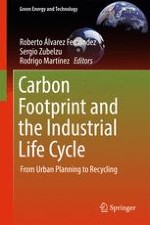2017 | OriginalPaper | Buchkapitel
12. Marginal Abatement Cost Curves (MACC): Unsolved Issues, Anomalies, and Alternative Proposals
verfasst von : José Luis Ponz-Tienda, Andrea Victoria Prada-Hernández, Alejandro Salcedo-Bernal, Daniel Balsalobre-Lorente
Erschienen in: Carbon Footprint and the Industrial Life Cycle
Aktivieren Sie unsere intelligente Suche, um passende Fachinhalte oder Patente zu finden.
Wählen Sie Textabschnitte aus um mit Künstlicher Intelligenz passenden Patente zu finden. powered by
Markieren Sie Textabschnitte, um KI-gestützt weitere passende Inhalte zu finden. powered by
